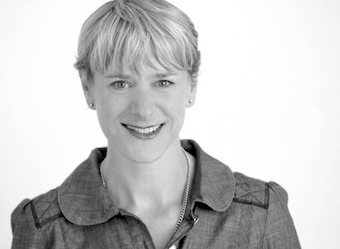Are we playing the mega TV brand game hard enough in Australia?
Share

Programs that are mega brands in their own right have dominated Australian TV screens for the past few years, and will continue to in 2013. Shows like The Voice, My Kitchen Rules, X Factor, MasterChef and The Block regularly command million-plus audiences. They also come with hefty purchase or production price tags that match the potential audiences they entice. But, despite the expensive outlay to secure the rights to these shows, Australian TV marketing departments aren’t doing enough to ensure their network is rewarded not just with high audience figures, but audience engagement that goes beyond fans tuning in each night for their favourite show and actually earns the network money.
Strategies to expand viewer engagement with a particular show aren’t anything new. DVDs, books and merchandise have always been used to expand the following of an already popular show. So, why aren’t we doing it better?
Expanding viewer engagement is a well-worn model in the children’s market, with Disney in pride of place in terms of how a network or producer can further capitalise on a show and its characters. Disney is a past master with rides at their theme parks, live shows, books, DVD, apparel and toys. The turnover and profit from these spin-offs can dwarf the value of the original TV show or film, such as Hanna Montana or the original media mega brand Mickey Mouse.
It’s overdue for this approach to be embraced, and embraced well, in the adult program market in Australia. The best, and most high-profile, example of a show that’s embraced viewer devotion beyond the TV screen recently is Top Gear. An avid, mostly male, following has seen the show and its creators earn millions from live events, exclusive digital content and gaming, as well as the ubiquitous DVDs, books and merchandise. Top Gear‘s viewer engagement strategy has been so successful that non-TV revenues account for more than half of the brand’s turnover. Not bad.
In Australia we don’t seem to be following the same game with the same intensity. If you visit the site for Australia’s top rating show last year, The Voice, there’s no locally-implemented continuation of the show. No show memorabilia, no live tour and no additional content on sale. Quite a contrast to the US site where viewers can further engage via an online shop that offers merchandise and additional content available all year round. US viewers need never miss out on their favourite show, and have easy access to elements that enhance their program experience. And this earns the US network dollars.
The Block and My Kitchen Rules are two Aussie TV success stories with ratings in the top five last year. But beyond this, any opportunity for avid viewers to engage with their favourite program – in a way that earns the network and production companies income – almost doesn’t exist. Both formats scream easy money when it comes to offering product and insight to fans, but they don’t seem to have much of an experience beyond the show. Sure, My Kitchen Rules released a cook book, but beyond that, nothing. What a missed opportunity. For MKR – cookware and cooking classes could have further extended the brand. And for The Block, don’t get me started on home DIY project kits…
X Factor Australia has got its act together a bit more with live events and music from the show on sale and prominent on their website and Facebook pages, but it’s still not a patch on the US equivalent. By discussing these examples, I’m not saying that from now on any program concept the networks and production companies create needs to be accompanied by a viewer engagement strategy that generates incomes – far from it. But networks willing to pay for the TV mega brand programs should be looking for opportunity – and implementing it – to earn income that offsets the high price tag.
In my view, we’ll see two levels of viewer engagement strategy generated in the coming years. For some shows we’ll see the TV show experience enhanced by additional complementary social or other media that increases the audience TV reach or loyalty. Other shows will be built up and positioned as break-out TV brands that offer their audience a multitude of experiences and offers beyond what they see on telly. The trick for media companies is getting the timing right. Investing in these additional elements too early before you know the success of the show, leaves a network even more exposed, but investing too late means a network won’t make as much money on the additional revenue streams as planned.
In 2013 and beyond, creating a TV mega hit will be harder than ever due to increased costs of making stand out shows and marketing them with increased competition for audiences’ viewing time between the web, gaming and our TV sets. So, finding new ways of engaging audiences in our shows and building brand loyalty should be mandatory weapons in our armoury. When shows think like an experience brand and engage fans beyond the screen, the audience is left anticipating the next series with greater enthusiasm and healthier financial future for the show overall is ensured.
Did you know: in each issue of the print edition, Marketing includes the very best opinion articles curated from our huge industry blogging community, as well as exclusive columnists writing on the topics that matter? Becoming a subscriber is only AU$45 for a whole year, delivered straight to your door. Find out more »















